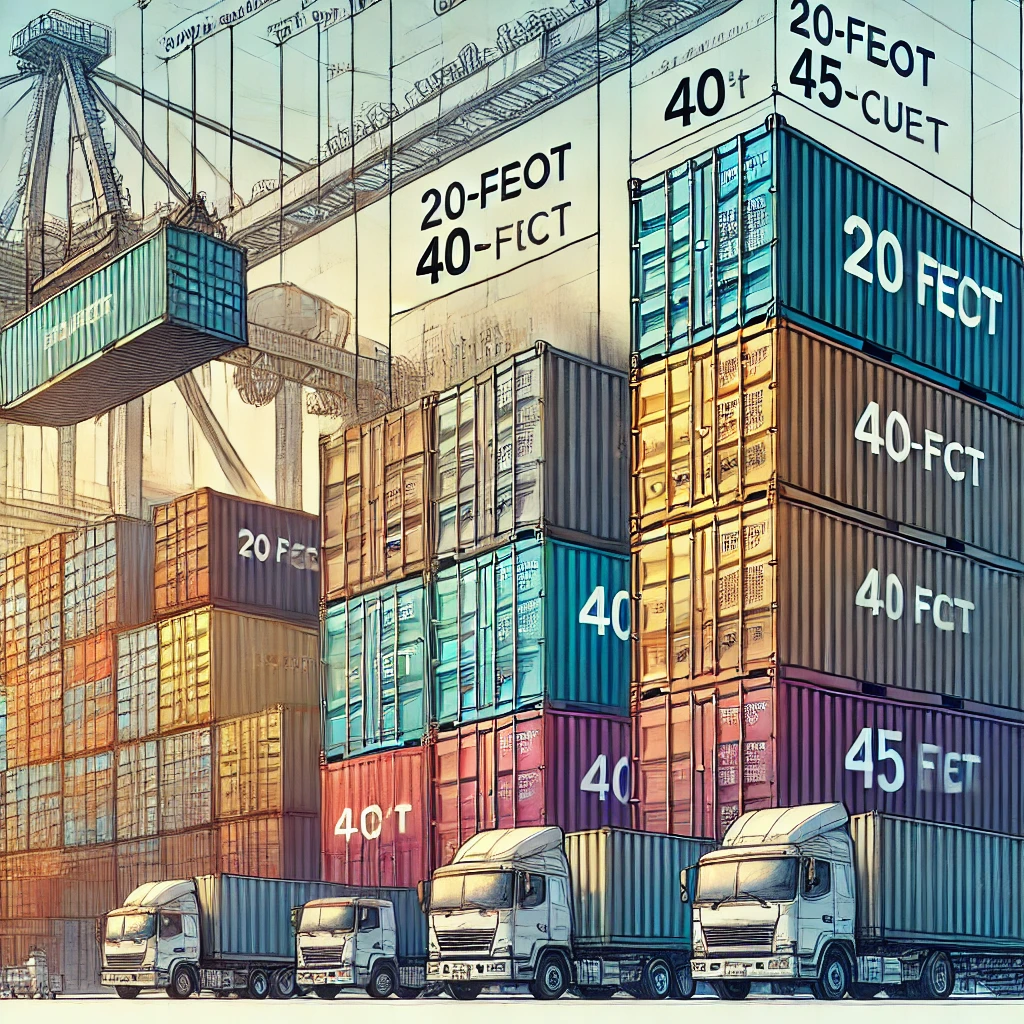Exploring Standard Shipping Container Size in Detail

What Is a Standard Shipping Container?
A standard shipping container is a steel intermodal container used for transporting goods across various modes of transportation. These containers follow International Organization for Standardization (ISO) specifications, ensuring compatibility across global shipping networks.
Key Features of Standard Containers:
- ISO Standardization: Ensures compatibility worldwide.
- Durability: Made from corrugated steel to withstand harsh conditions.
- Secure Locking Mechanisms: Protect cargo from damage and theft.
- Intermodal Use: Easily transferred between ships, trucks, and trains.
- Weatherproofing: Designed to protect contents from external elements.

Common Standard Shipping Container Sizes
1. 20-Foot Container (TEU – Twenty-Foot Equivalent Unit)
📦 Dimensions:
- External: 20’ L × 8’ W × 8’6” H
- Internal: 19’4” L × 7’8” W × 7’10” H
- Capacity: ~33 cubic meters (~1,172 cubic feet)
- Max Gross Weight: ~30,480 kg (~67,200 lbs)
🔹 Ideal for: Small businesses, heavy goods, or limited storage.
2. 40-Foot Container (FEU – Forty-Foot Equivalent Unit)
📦 Dimensions:
- External: 40’ L × 8’ W × 8’6” H
- Internal: 39’6” L × 7’8” W × 7’10” H
- Capacity: ~67 cubic meters (~2,389 cubic feet)
- Max Gross Weight: ~30,480 kg (~67,200 lbs)
🔹 Ideal for: Large shipments, oversized cargo, or high-volume goods.
3. 40-Foot High Cube Container
📦 Dimensions:
- External: 40’ L × 8’ W × 9’6” H
- Internal: 39’6” L × 7’8” W × 8’10” H
- Capacity: ~76 cubic meters (~2,698 cubic feet)
- Max Gross Weight: ~30,480 kg (~67,200 lbs)
🔹 Ideal for: Taller cargo, extra storage, or large-scale logistics.
4. 45-Foot High Cube Container
📦 Dimensions:
- External: 45’ L × 8’ W × 9’6” H
- Internal: 44’6” L × 7’8” W × 8’10” H
- Capacity: ~86 cubic meters (~3,037 cubic feet)
- Max Gross Weight: ~30,480 kg (~67,200 lbs)
🔹 Ideal for: Extra-long cargo, retail shipments, or bulk logistics.

How to Choose the Right Shipping Container Size
Selecting the right container size depends on several factors:
1. Volume and Cargo Type
🔄 Consider cargo size, shape, and stacking ability to maximize space utilization.
2. Weight Restrictions
⚖️ Ensure the chosen container complies with weight limits for transport and handling.
3. Transportation Mode
🚛 Different container sizes may be more efficient for truck, rail, or sea transport.
4. Cost Efficiency
💰 Larger containers may reduce per-unit shipping costs but require higher handling capacity.
Why Standardized Container Sizes Matter
📌 Efficiency: Containers can be stacked and transported easily. 📌 Cost-Effectiveness: Reduces logistics expenses. 📌 Security: Ensures cargo remains intact and protected. 📌 Sustainability: Allows for optimized space usage, reducing carbon footprints.

Frequently Asked Questions (FAQs)
Q1: What is the most common shipping container size?
📌 Answer: The 40-foot container (FEU) is the most widely used for international shipping.
Q2: Are high cube containers better than standard containers?
📌 Answer: High cube containers offer extra height, making them ideal for larger or taller cargo.
Q3: Can shipping containers be customized?
📌 Answer: Yes, containers can be modified for refrigeration, ventilation, and additional security.
Q4: What is the weight limit for a 20ft container?
📌 Answer: The maximum gross weight is approximately 30,480 kg (67,200 lbs).
Conclusion
Understanding standard shipping container sizes is crucial for optimizing logistics and transportation. From 20-foot containers for small cargo to 45-foot high cubes for large shipments, selecting the right size can enhance cost savings, efficiency, and security.
By leveraging ISO-standardized shipping containers, businesses can streamline their global supply chain, reduce shipping costs, and ensure seamless intermodal transport
